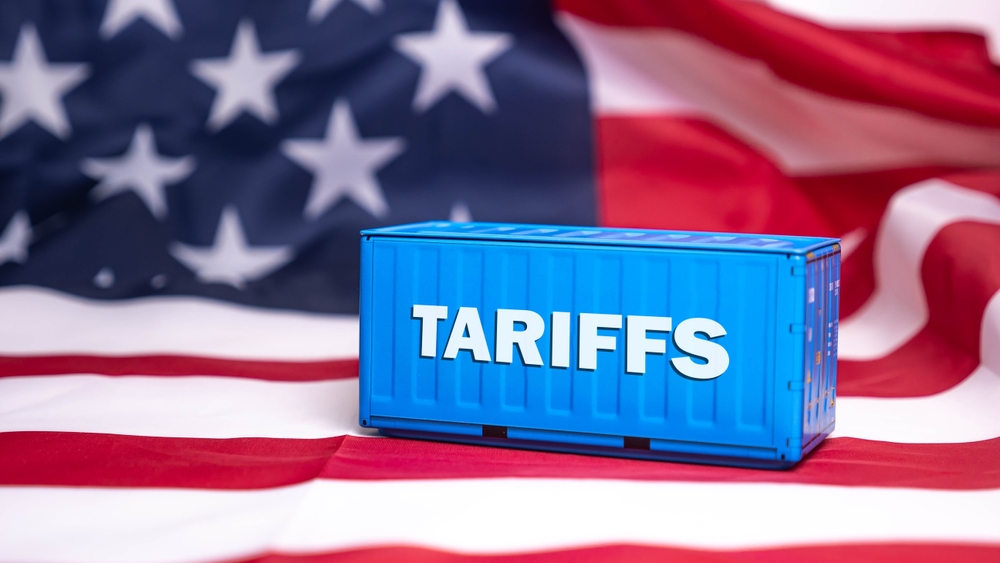How to Minimize US Tariffs by Using Canadian Warehousing
US tariffs are shifting with little warning, especially under current and proposed trade actions. The Trump administration’s approach to trade has reignited tariff pressure, and affected goods now include everything from electronics to consumer packaged goods. These policies are not only increasing tariff rates but also creating volatility in how and when those tariffs are applied.
That unpredictability is already disrupting logistics strategies. Companies are forced to choose between paying inflated duties up front or risking margin losses on shipments that sit in bonded warehouses for months. When rates change mid-cycle, your landed costs can balloon without warning. Planning annual forecasts, supply chain budgets, or pricing strategies becomes harder when duties can swing 20 to 100 percentage points based on government action.
This guide explains how you can minimize and manage the impact of US tariffs by storing your inventory in Canadian warehousing.
4 Steps to Minimize Tariffs by Storing Inventory in Canada
Step 1: Reroute Products Through Canada to Delay Tariff Payment
You can bypass immediate US tariff charges by rerouting products through Canadian ports. Rather than importing directly into the US, shipments enter Canada first. Duties, if any, are paid on arrival in Canada instead of the US. This route creates the basis for a deferral strategy and introduces flexibility that direct-to-US importation doesn’t allow.
Because these goods are not being sold in Canada, you may be eligible for a refund on Canadian duties when they leave Canada for the U.S., depending on product classification and compliance. The routing structure must be documented properly, and Canadian customs laws must be followed precisely. A reliable 3PL and customs broker can manage this compliance on your behalf.
This approach gives you better control over when your product actually enters the US. And with that control, you gain financial leverage.
Step 2: Use Canadian Warehouses to Defer Tariffs and Align With Demand
Once goods arrive in Canada, they can be stored in warehouse facilities near major US border points. This storage setup lets you keep inventory close to US markets without triggering tariff payments right away. You only move products into the US as orders are placed.
This method spreads your tariff exposure across smaller, more frequent cross-border movements:
- You avoid large upfront tariff bills on bulk inventory that drain cashflow
- You can pause or speed up US imports based on real-time sales performance
- You limit overstock risks in the US and reduce carrying costs tied to uncertain demand
For example, a business facing 22% US tariffs on goods shipped directly into a US warehouse can reroute the inventory through Canada, pay that 22% only on the units sold and shipped into the US, and potentially reclaim the rest if stock remains in Canada.
Step 3: Recover Tariffs Through Refund Programs
Products stored in Canada but never sold within Canada may qualify for duty refunds. This recovery is possible because the goods were not consumed in the Canadian market. By working with a customs broker, you can submit proper documentation to reclaim duties paid on import.
Refund eligibility depends on:
- The nature of the product
- How the inventory is tracked and managed
- Whether the goods ever entered Canadian commerce
Refund processing adds complexity, but the financial upside is real. Some businesses save hundreds of thousands per year simply by recovering duties that would have been lost in a traditional US-bound supply chain.
Step 4: Improve Cash Flow With Staged Tariff Exposure
This strategy creates a direct improvement to your working capital. Rather than absorbing a six-figure duty charge in one shipment, you manage tariffs in smaller increments, tied to real demand. This frees up cash flow and reduces your reliance on credit or short-term borrowing.
You can also:
- Better manage your landed costs.
- Hedge against tariff rate changes over time.
- Adapt pricing more precisely based on sales and margin.
This is especially useful when tariff policy is unstable. If the 145% tariff rate drops to 30% during the year, you benefit immediately on any inventory still in Canada. That’s not possible when inventory is already locked into US-based distribution.
Tariff Advantages of Using Canadian Warehousing
Canadian warehousing gives you options that traditional US-based storage does not. It offers a middle ground between holding inventory too far from your customers and locking in high tariff costs up front. For businesses navigating an unstable tariff environment, this balance can reduce financial risk while maintaining service levels.
Advantage 1: You Avoid Large Upfront Tariff Costs on Full Inventory
Storing product in the US means paying duties on everything upon entry—regardless of how fast it sells. When tariff rates spike, that creates major strain on working capital. By contrast, keeping goods in Canadian warehouses allows you to ship into the US in small quantities, as needed. You only pay tariffs on what you move.
This structure is especially helpful for product lines with:
- Variable sales cycles
- High unit value
- Exposure to targeted US tariffs
Avoiding a bulk tariff payment preserves cash flow and reduces the financial pressure of unsold stock.
Advantage 2: You Create Flexibility to Handle Tariff Fluctuations
US tariff policy is in flux, and many businesses are paying the price for moving inventory too soon. When rates jump after you’ve already sent ocean freight destined for the U.S., you’re stuck with high-duty stock you can’t refund or reroute. Canadian warehousing holds inventory outside the reach of US tariffs until it’s actually needed.
If duties drop, you ship from Canada to your U.S. warehouse. If they spike, you wait, only sending inventory that has been sold. That flexibility shields you from the worst timing risks of international trade policy. The flexible timing to move product to the U.S. when tariff rates drop can give you a huge pricing and/or margin advantage over your competitors who shipped their product directly to the U.S. while tariffs were high.
Advantage 3: Explore the Canadian Market While Reducing Tariff Pressure
While your core goal may be US sales, storing in Canada opens access to an additional customer base. You can sell directly into the Canadian market without re-importing or duplicating inventory. This added reach can help offset duty costs and keep inventory moving during slower periods in the US.
It also simplifies North American distribution by allowing dual-market inventory positioning.
Advantage 4: Enhance Financial Stability With Deferred Tariff Payments
Staggering your duty payments brings immediate financial relief. For large-volume importers, this approach can reduce monthly tariff outlay by tens of thousands of dollars.
Businesses use that freed-up capital to:
- Improve inventory turns.
- Reinforce pricing flexibility.
- Avoid short-term financing to cover duties.
Deferred duties also reduce exposure to interest costs and balance sheet stress—two pain points often overlooked in tariff discussions.
How PiVAL Can Help
At PiVAL, we’ve designed our infrastructure and services to support companies that need to manage tariff exposure without slowing down their supply chain. We operate ISO 9001-certified facilities near both the East and West Coast US entry points, allowing you to store inventory close to your markets while avoiding the full cost of immediate US importation.
We handle every step—from port drayage to warehousing to cross-border distribution. Our integrated customs support means you don’t have to coordinate between brokers and carriers yourself. We work with a single customs broker partner and manage the documentation, refunds, and compliance processes directly through our team. If your goods qualify for a tariff refund, we’ll help make sure the process is efficient and accurate.
What sets us apart is our focus on flexibility and real-time responsiveness. We specialize in just-in-time US distribution, so you can align inventory movement with demand, instead of betting on forecasts. That lets you stage product in Canada and move only what’s needed—preserving cash flow and protecting against (or capitalizing on) tariff shifts.
Our team can walk you through the entire strategy and show you how to make Canadian warehousing work for your business model.
Our warehouses are located in:
PiVAL specializes in:
Contact PiVAL Today
If you’re ready to reduce your tariff risk while keeping your logistics network responsive, reach out to us. Our team will show you how to use Canadian warehousing to protect your margins and keep your supply chain moving. Let’s make your cross-border strategy smarter.
Contact Us
Stay Up-To-Date
There's always something new from PiVAL


